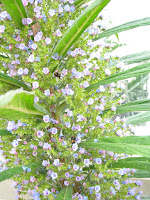 It's pretty obvious that Mary is a bit nostalgic for some temperate spring, either that or the Neotropical Savanna just got innudated by us northern temperate types. Either way, it's a spring Berry-go-Round Up (#27) of botanical blogs. Thanks for the posting.
It's pretty obvious that Mary is a bit nostalgic for some temperate spring, either that or the Neotropical Savanna just got innudated by us northern temperate types. Either way, it's a spring Berry-go-Round Up (#27) of botanical blogs. Thanks for the posting.
Change of address
5 months ago in Variety of Life























